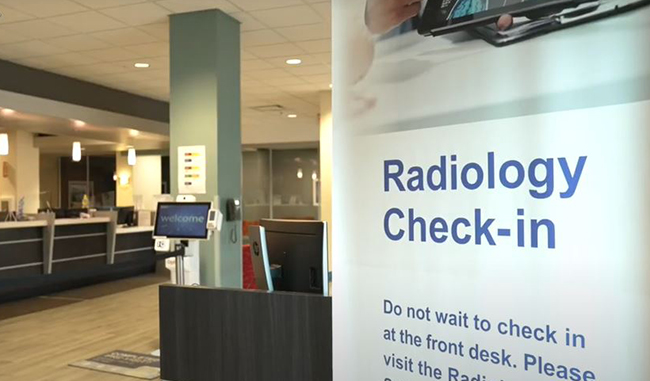
This Is Why Sports Medicine Is Important for Athletes
Sports medicine (sometimes called “sports and exercise medicine”) is a medical specialty that deals with the treatment and prevention of injuries related to sports and fitness.
Healthcare professionals who work in this interdisciplinary medical field focus not only on treating sports-related injuries, but also on injury prevention, rehabilitation, nutrition, and performance training in order to help athletes improve their game.
A sports medicine specialty team often involves physicians who are trained in sports medicine, as well as orthopedic surgeons, physical therapists, trainers, coaches, and others. The team works together to help patients get back into playing shape as safely and quickly as possible.
Academic medical centers often maintain academic research departments that conduct research and clinical trials; the information these research departments produce often benefits the field of sports medicine as a whole, aiding in the diagnosis, treatment, and prevention of sports-related conditions and injuries.
Sports Medicine in the 21st Century
Sports medicine fills a much-needed niche in medicine. Sports- and activity-related injuries are very common, not only among professional athletes but also, among the general population. 
From 2011-2016 there were 8.6 million sports- and recreation-related injuries in the U.S. among people of all ages, according to a report by the Centers for Disease Control (CDC).1
Although it is a relatively new medical specialty, having emerged as a distinct field only in the late twentieth century, sports medicine has become indispensable for athletes, with its targeted focus on their unique needs and concerns. Reputable sports medicine specialists and surgeons can make a tremendous difference in the lives of athletes.
Ahead, we’ll explore the meaning and importance of sports medicine in more detail, we’ll look at some of the most common sports injuries among athletes and fitness enthusiasts, and we’ll cover prevention and treatment options for sports injuries. First, let’s look at some of the benefits of sports medicine.
Sports Medicine Benefits
- Specialized Care: Sports medicine physicians are specially trained to care for athletes, fitness professionals, and active individuals. They understand the impacts of sports and exercise on their patients’ bodies, such as concussions and repetitive motion injuries, and they work closely with orthopedic surgeons and physical therapists to develop tailored treatment plans that suit each patient’s specific needs.
- Enhanced Injury and Reinjury Prevention: Sports medicine physicians have an in-depth understanding of how athletes use their bodies during practice and play; as such, they provide patients with expert advice and instructions on preventing injuries and avoiding re-injuring a previously damaged area. They help professional and novice athletes alike make important “return to play” decisions, conducting pre-participation physical exams to ensure their patients are ready to resume activities.
- Cutting-Edge Treatment Options: From leading-edge reconstructive surgical techniques to regenerative medicine procedures like platelet-rich plasma (PRP) therapy and stem cell therapy, sports medicine physicians and surgeons utilize the latest techniques and procedures to help restore function to injured areas.
- Enhanced Athletic Performance: Sports medicine specialists often play a role in developing tailored training programs constructed around an athlete’s individual needs, strengths, and weaknesses. These experts have the knowledge and tools to evaluate an athlete’s anatomical strengths and weaknesses, make training regimen recommendations, and identify areas for improvement.
Athletes: Putting Their Bodies to the Test
Professional athletes test their bodies every day in ways most of us might have a hard time imagining. In the nearly year-round training season leading up to the Tour de France, for example, a rider will work his way up to 6 hours of cycling a day for 5  or 6 days a week at varying levels of intensity. He might ride 60, 100, even 180 kilometers in a single day to simulate what he’ll experience on the Tour.
or 6 days a week at varying levels of intensity. He might ride 60, 100, even 180 kilometers in a single day to simulate what he’ll experience on the Tour.
While Tour de France riders are exceptional athletes in a category of their own, professional and aspiring pro-tennis players, golfers, basketball players, personal trainers, and athletes of every variety also spend an impressive number of hours on the court, course, field, or in the gym.
Such intense training can take its toll on the body, and injuries are virtually inevitable. This is why having a skilled sports medicine doctor is essential. Let’s explore sports medicine in more detail and how it helps athletes and fitness enthusiasts. First, a few words about injury types.
Acute vs. Chronic Sports Injuries
Generally, there are two types of sports injuries: acute and chronic.
- Acute sports injuries are those that occur suddenly while playing, training, or exercising (e.g., a fractured bone or a torn tendon). Acute injuries aren’t always immediately obvious, especially when adrenaline, cortisol, and other hormones are coursing through a person’s body. Signs and symptoms of an acute injury can include sudden, severe pain, swelling, redness, or tenderness at/around the injury site; inability to place weight on a leg, knee, ankle, or foot; inability to move a joint normally; or a bone that is visibly broken or dislocated.
- Chronic sports injuries (also called overuse injuries) are those that occur over time from repetitive motion or strain. Examples include tennis elbow, runner’s knee, and shin splints. Signs and symptoms of a chronic injury can include pain when you play/exercise; swelling and/or tenderness at the injury site; and a dull, aching pain during rest.
Common Sports Injuries
- Sprains and strains, especially ankle and hamstring sprains

- Elbow injuries, including tennis elbow; read more about procedures for elbow injuries
- Knee injuries, including ACL tears; the anterior cruciate ligament (ACL) is a major ligament in the knee; read more about surgical procedures for knee injuries
- Tendinitis (inflammation of a tendon, usually caused by overuse or poor form)
- Bursitis (inflammation of the fluid-filled sacs that cushion joints)
- Achilles tendon injuries
- Shin splints (throbbing and aching of shin muscles; causes can include irritated and swollen muscles from overuse, stress fractures, poor lower spine function, and others)
- Fractures and dislocations
- Lacerations and abrasions (cuts and scrapes)
Sports medicine involves not only treating injuries, but prevention, physical therapy/rehabilitation, and (for some) performance training.
Sports Injury Prevention
Preventing injuries requires good form and technique, good equipment (and a good dose of common sense) while training/playing/exercising. Even the most seasoned athletes should work themselves into shape slowly, especially after a sedentary period. It may be tempting to jump right into a former routine without preparing, but this is a recipe for injury.
Athletes should warm up before each exercise session, without exception, and cool down afterward. They should stretch regularly, use good technique (a performance training program can help in this area), and be mindful of fatigue and dehydration, which can impair concentration and lead to an injury. Athletes should always respond to the signals their body is sending—dizziness, faintness, nausea, overheating, and extreme fatigue are all clear warning signs.
Prevention really is the best form of treatment.
Sports Injury Treatments
Nonetheless, injuries happen. The PRICE method is usually the first line of treatment for less severe injuries, such as sprains and strains. The PRICE method involves:
- Protection: Applying bandages, wraps, splints, etc., can help protect tissues from further damage.
- Rest: Rest is a critical but an often overlooked part of the healing process. Your sports medicine specialist will work with you on a plan to gradually reintroduce activities.
- Ice: Icing an injured area for 24-72 hours on and off after an injury helps reduce swelling and pain.
- Compression: Pressure also helps reduce swelling and inflammation; athletes commonly use compression bands around their knees, elbows, and other previously injured or vulnerable areas.
- Elevation: Gravity helps drain fluid away from injured tissues to reduce pain, swelling, and inflammation; a simple but effective method.
Medications, including acetaminophen (Tylenol) and NSAIDs (non-steroidal anti-inflammatory drugs) such as ibuprofen and naproxen, can reduce inflammation and help with pain management, but these are meant as temporary solutions.
Regenerative medicine harnesses the body’s own tissues to help promote self-healing. Platelet-rich plasma (PRP) therapy involves isolating and concentrating platelets from the patient’s own blood and injecting it into the injured area to initiate healing. Stem cell therapy involves using stem cells (usually from bone marrow) to promote healing and regenerate tissue.
Physical Therapy/Rehabilitation
Some injuries require physical therapy/rehabilitation tailored to the specific needs of the individual. Physical therapy can help restore function, decrease pain, increase strength and flexibility, and prevent future injuries. It may involve the use of:
Therapeutic exercise (such as stretching, core exercises, and weight lifting)
- Heat treatments
- Massage
- Aquatic therapy
- Balance training
- Spinal traction
- Other therapies
Minimally Invasive Surgery
Surgery may be needed to correct more severe injuries that don’t respond to other treatments. Minimally invasive surgery involves making a series of small incisions (rather than one large “open” incision) through which tiny surgical tools fitted with  cameras are passed to perform the surgery. There are many advantages to minimally invasive surgery, including reduced blood loss, smaller scars, shorter hospitalization, and faster recovery times.
cameras are passed to perform the surgery. There are many advantages to minimally invasive surgery, including reduced blood loss, smaller scars, shorter hospitalization, and faster recovery times.
Surgery can help correct a range of sports-related injuries, including:
- Elbow injuries
- Knee injuries
- Foot and ankle injuries
- Spine disorders
- Trauma
- Nerve damage
- Muscle grafts
- Joint damage (corrected with reconstructive surgery)
Which combination of treatments/therapies a doctor prescribes will depend on each person’s unique situation. Surgery is generally reserved as a last option after other treatments/therapies have been exhausted.
Sports Medicine: Playing a Vital Role in Our Modern Health-Conscious World
The importance of sports medicine in games and sports cannot be overstated. Humans have been playing sports since the dawn of civilization, yet more and more people today recognize the importance of exercise and physical activity for good health.
Sports that have once been reserved for the fittest and most talented among us are increasingly being embraced by everyday people. This makes sports medicine, with its comprehensive focus on all issues surrounding sports and exercise, from injury prevention to performance training, more important and relevant than ever.
About Crystal Run Healthcare
The exceptional team of world-class sports medicine specialists at Crystal Run Healthcare offers patients access to the latest diagnostic tools and treatments for sports-related injuries. The fellowship-trained specialists at Crystal Run have worked with the New York Jets, the New York Mets, the Philadelphia Phillies, and a host of collegiate and high school athletes.
Crystal Run Healthcare offers leading-edge diagnosis and treatment for a range of ankle, shoulder, knee, elbow, and hip injuries, and its practitioners are among the few specialists in the region who perform elbow arthroscopy (a minimally invasive procedure for examination and treatment), hip arthroscopy, and arthroscopic shoulder reconstruction (joint replacement). Learn more about our exceptional team of sports medicine specialists and orthopedic surgeons, and call us at 845-703-6999 to schedule an appointment.
Sources

 Optum Radiology at Crystal Run Healthcare
Optum Radiology at Crystal Run Healthcare Request medical records online
Request medical records online